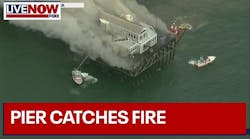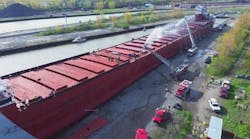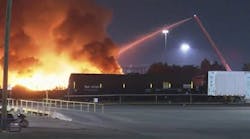"It's important that fire departments train firefighters in as close to actual conditions as possible while also protecting them in the process," said Michael D. Brown, Homeland Security Under Secretary for emergency preparedness and response. "This special report highlights how this challenge can be met by the nationals fire service educators and trainers."
The review, compiled by the U.S. Fire Administration (USFA), also highlights the importance of following currently accepted procedures and standards to avoid training deaths and injuries and the need for instructors to avoid situations for which the students are not yet prepared.
The challenge is very real. Since 1987, reported training-related injuries have increased by nearly 21 percent. In 2001 alone, almost 7,000 training-related injuries were reported. That year, a firefighter died and two were injured while participating in a live burn training situation.
At the same time, live fire training buildings and simulators fed by propane or natural gas have many built-in safety features but may not provide the same quality of realism as live fire training in acquired structures. The training buildings, for example, fail to teach students to react to the diverse conditions encountered in real fire operations.
In addition, the need to provide in training in situations other than fires, such as hazardous material incidents, increases the danger to participants. In 1997, for example, a member of a unit training to respond to a chemical incident was overcome by a nerve agent and needed to be administered an antidote to stop the seizures.
"Safe and effective but realistic firefighter training is vital to meet our mission of preserving life and property," said US Fire Administrator R. David Paulison. "This special report reviews training issues, tragic mistakes of the past and determines ways fire-related training can be safer but effective."
Other lessons learned cited in the special report include:
It is increasingly important that firefighters receive training in fire behavior and extinguishment methods for different types of buildings;
Modern protective equipment may make life-threatening fire conditions less obvious and firefighters must be trained to recognize the visual and physical clues to impending danger;
During training, a firefighter's physical stress level should be monitored continuously and departments should consider stronger physical screening programs and long-term health and wellness programs to reduce training-related heart attacks and strokes.
USFA develops technical reports on selected major incidents, usually involving multiple deaths or a large loss of property. USFA also prepares periodic special reports to discuss events, drills or new technologies or tactics of interest to the fire service. The focus is on "lessons learned" or new knowledge that underscores ongoing issues in fire service. These reports provide detailed information on the nature of the fire problem in this country for policymakers who decide resource allocations, and within the fire service to improve codes and code enforcement, training, public fire education and building technology. This special report was based on meetings, informal interviews and a study of a wide array of fire training literature.
A copy of the full report can be found at:
www.usfa.fema.gov/applications/publications/tr100.shtm
On March 1, 2003, FEMA became part of the U.S. Department of Homeland Security. FEMA's continuing mission within the new department is to lead the effort to prepare the nation for all hazards and effectively manage federal response and recovery efforts following any national incident. FEMA also initiates proactive mitigation activities, trains first responders, and manages Citizen Corps, the National Flood Insurance Program and the U.S. Fire Administration.





